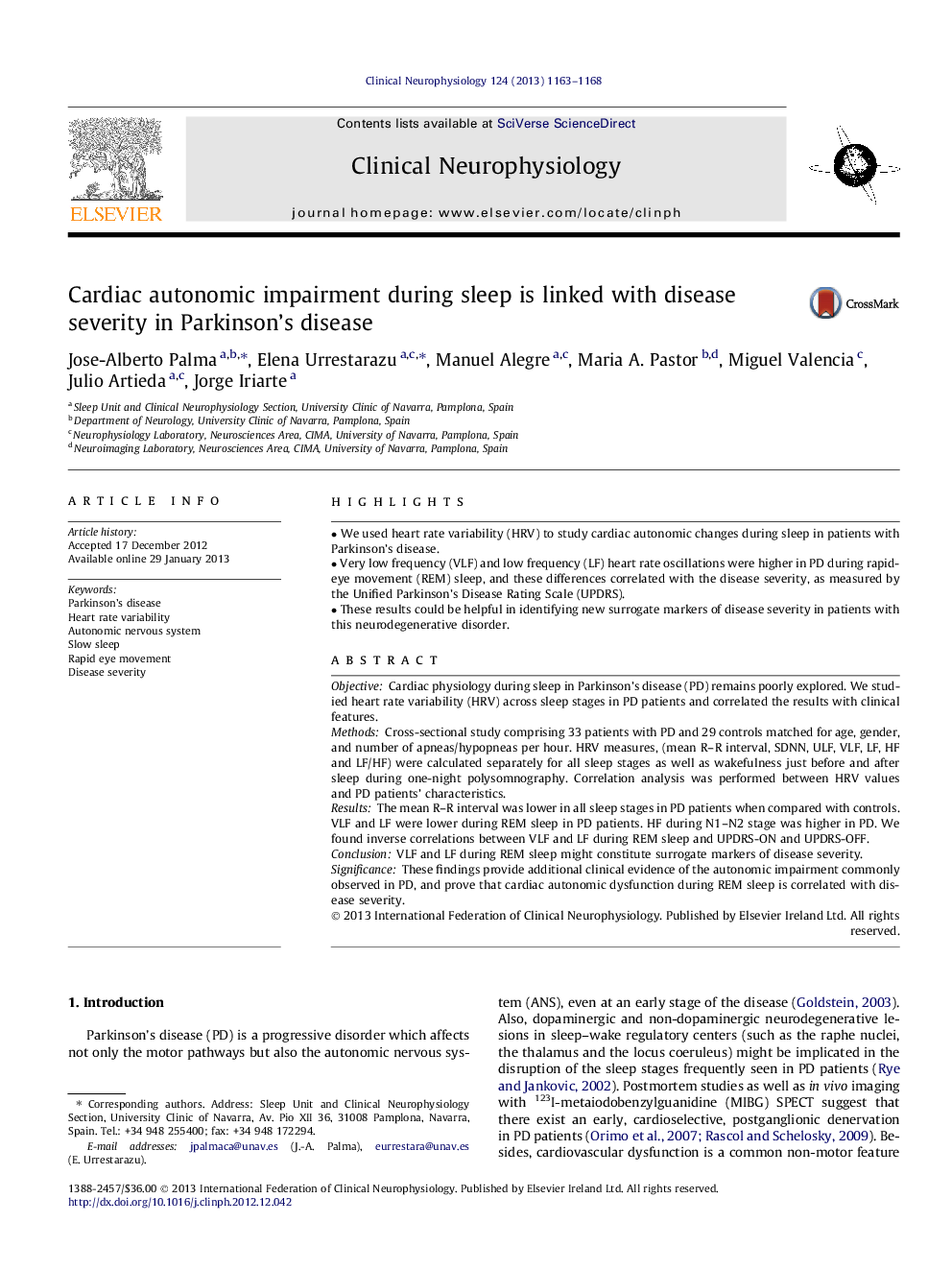| Article ID | Journal | Published Year | Pages | File Type |
|---|---|---|---|---|
| 3043871 | Clinical Neurophysiology | 2013 | 6 Pages |
ObjectiveCardiac physiology during sleep in Parkinson’s disease (PD) remains poorly explored. We studied heart rate variability (HRV) across sleep stages in PD patients and correlated the results with clinical features.MethodsCross-sectional study comprising 33 patients with PD and 29 controls matched for age, gender, and number of apneas/hypopneas per hour. HRV measures, (mean R–R interval, SDNN, ULF, VLF, LF, HF and LF/HF) were calculated separately for all sleep stages as well as wakefulness just before and after sleep during one-night polysomnography. Correlation analysis was performed between HRV values and PD patients’ characteristics.ResultsThe mean R–R interval was lower in all sleep stages in PD patients when compared with controls. VLF and LF were lower during REM sleep in PD patients. HF during N1–N2 stage was higher in PD. We found inverse correlations between VLF and LF during REM sleep and UPDRS-ON and UPDRS-OFF.ConclusionVLF and LF during REM sleep might constitute surrogate markers of disease severity.SignificanceThese findings provide additional clinical evidence of the autonomic impairment commonly observed in PD, and prove that cardiac autonomic dysfunction during REM sleep is correlated with disease severity.
► We used heart rate variability (HRV) to study cardiac autonomic changes during sleep in patients with Parkinson’s disease. ► Very low frequency (VLF) and low frequency (LF) heart rate oscillations were higher in PD during rapid-eye movement (REM) sleep, and these differences correlated with the disease severity, as measured by the Unified Parkinson’s Disease Rating Scale (UPDRS). ► These results could be helpful in identifying new surrogate markers of disease severity in patients with this neurodegenerative disorder.
